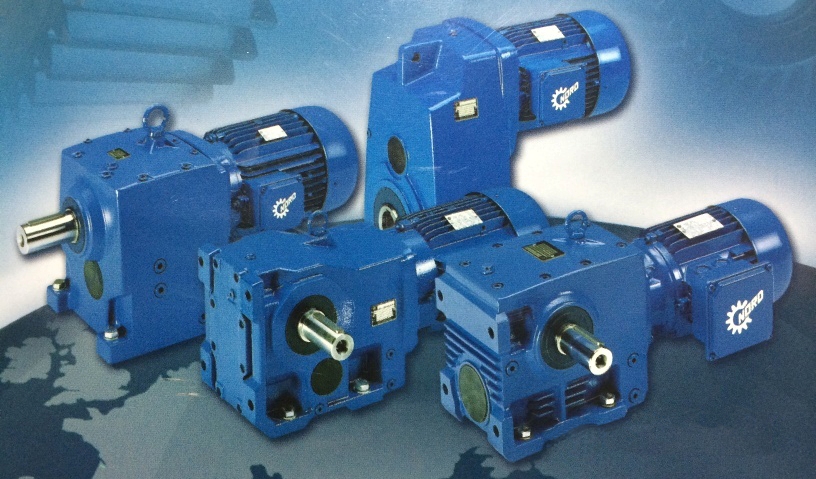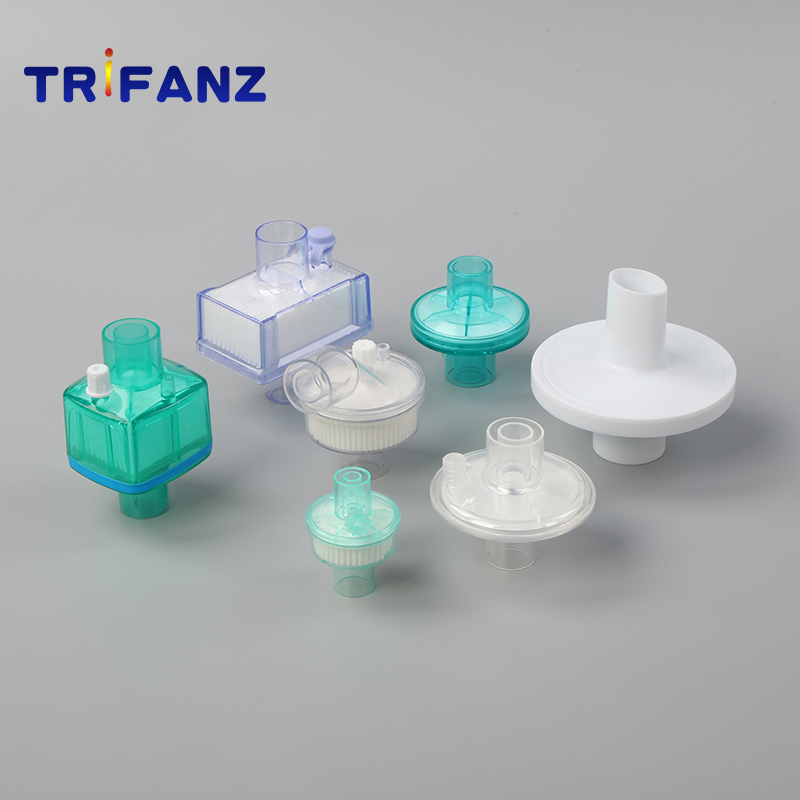 1 motor
1 motor
The agitator shaft of the mixing device is typically driven by an electric motor. Since the speed of the mixing equipment is generally low, the motor is mostly used in combination with the transmission, and sometimes the inverter is directly regulated. For this reason, when selecting an electric motor, special consideration should be given to the problem of matching with the transmission.
The model of the motor should normally be selected based on factors such as the power of the mixing shaft and the working environment surrounding the mixing equipment, and the following basic principles are followed:
1 According to the load nature and process conditions of the mixing equipment, the motor type is selected according to the requirements of starting, braking, running and speed regulation of the motor.
2 According to the requirements of load torque, speed variation range and starting frequency, consider the temperature rise limit, overload capacity and starting torque of the motor, reasonably select the motor capacity, and determine the cooling ventilation mode. At the same time, the selected motor model and rated power should meet the requirements of increasing starting power when the mixing equipment is started.
3 According to the environmental conditions of the place of use, such as temperature, humidity, dust, rain, gas and corrosion, and flammable and explosive gases, consider the necessary protection methods and the structure of the motor to determine the explosion-proof level and degree of protection of the motor. For gas or steam explosion hazardous environments, the structural type and corresponding level and group of explosion-proof motors shall be selected according to the classification level of the explosion hazardous environment and the level of gas or steam in the explosion hazardous area, the group and the operating conditions of the motor; Dust explosion hazardous environment, according to the classification level of the explosion hazardous environment and the operating conditions of the motor, select the structure type of the explosion-proof and protective motor and the corresponding explosion-proof and protection level; for the fire-hazardous environment, according to the fire-fighting environment classification level and motor The conditions of use, the type of construction of the protective motor and the corresponding degree of protection. In a chemically corrosive environment, the appropriate motor should be selected according to the classification of the corrosive environment.
4 Determine the voltage level of the motor according to the enterprise grid voltage standard and the power factor requirements.
5 According to the high speed of the stirring equipment and the performance requirements of the transition process of the electric drive speed control system, and the complexity of the mechanical deceleration, the rated speed of the motor is selected.
In addition, the selection of the motor must also meet the energy-saving requirements, and comprehensive consideration of operational reliability, availability, versatility of spare parts, ease of installation and maintenance, product prices, operating and maintenance costs and other factors.
2 transmission
The transmission is a separate closed transmission between the prime mover and the working machine. Its main function is to reduce the speed and increase the torque accordingly. Since the running speed of the stirring shaft is mostly in the range of 30-600 rpm, which is smaller than the rated speed of the motor, a transmission is often required at the exit end of the motor. According to the transmission capacity, the transmission can be divided into two categories: reducer and continuously variable transmission.
According to the characteristics of transmission and structure, the reducer can be divided into four types: cycloid reducer, gear reducer, worm gear reducer and belt reducer. A suitable transmission should be selected according to the process requirements and operating environment. In addition to meeting the requirements of power and output speed, the selected transmission should be reliable, easy to maintain, and have high mechanical efficiency and low noise.
2.1 cycloidal pinwheel reducer
The cycloidal pinwheel reducer adopts the planetary transmission principle and adopts cycloidal pin gear meshing. It is an advanced design and novel structure of the speed reduction mechanism, allowing forward and reverse operation. It is widely used in various chemical transmission machinery such as petrochemical, light industrial food, pharmaceutical, textile printing and dyeing, metallurgical mining, sewage treatment and engineering machinery.
The characteristics of the planetary gear reducer are high transmission efficiency, wide transmission ratio range, transmission power from 10W to 50000kW , volume and weight are much smaller than ordinary gear reducers and worm reducers. However, its structure is more complicated and the manufacturing precision is higher.
2.2 Gear reducer
Gear reducers include cylindrical gear reducers and bevel gear reducers. Cylindrical gear reducers are widely used in all reducers. They can transmit power from very small to 4000 kW and peripheral speeds from very low 60. -70m/s ; and the input and output shaft positions of the bevel gear reducer are 90o , so it is suitable for applications where the input and output shafts are perpendicular to each other.
The main features of the gear reducer are high efficiency, long-lasting work, and easy maintenance. The number of stages of the reduction gear can be divided into single, two, three or even multiple stages; And horizontal; according to the characteristics of its motion diagram can be divided into expansion, coaxial and split type.
In order to avoid excessive size of the reducer, generally, when the transmission ratio is below 8 , a single-stage gear reducer can be used. When it is greater than 8 , the two-stage or two-stage gear reducer is used.
2.3 worm gear reducer
The worm gear reducer adopts worm gear transmission, which is mainly used for large transmission occasions. It has the advantages of compact transmission structure, small contour size and stable operation, but the efficiency is low. Therefore, the single-stage worm reducer is used more, and the two-stage worm Reducers are less used. The range of the single-stage worm reducer is generally 10-70 .
2.4 belt reducer
The belt reducer has the characteristics of high efficiency, long service life, compact structure, stable transmission and convenient disassembly. It can be operated in the forward and reverse directions and is widely used in large-scale fermentation equipment.
2.5 mechanical continuously variable transmission
In a considerable number of agitation operations, a continuously variable transmission is often required because the process conditions require the agitator shaft to be shifted or the agitation process is in the experimental research phase so that the agitation shaft speed is not determined.
Mechanical continuously variable transmissions mostly use the friction ( traction ) force transmission at the contact between the main power member and the driven member to transmit motion and torque, and change the relative position of the main and follower members to change the soil radius of the contact to achieve no Level shifting.
The main function of the continuously variable transmission is to adjust the working speed at any time according to the actual needs of the production, so as to obtain the appropriate speed of the Zui, that is, the transmission ratio can be changed steplessly within the predetermined range of the design to simplify the transmission structure and improve the production efficiency. Product quality, rational use of kinetic energy, at the same time can achieve remote control and automatic control functions, reducing the labor intensity of operators.
The continuously variable transmission has the following features:
1The structure is simple. Most planetary friction type continuously variable transmissions consist of 6-8 key transmission components with a small number of transmission components and a compact structure. The overall size is small and the whole machine is relatively easy to manufacture.
2 The shift range is large. The transmission structure can be simplified, the transmission is smooth, and the noise is extremely low.
3 The driving power is large and the carrying capacity is strong.
4 output mechanical characteristics are superior. Under normal circumstances, the constant torque output characteristic of the CVT is low at low speed, and the constant power output can be achieved at high speed.
5 high transmission efficiency and long service life. The normal service life can reach more than 10 years.
Due to the above characteristics, coupled with its deceleration type transmission, it is widely used in mixing equipment.
It is worth noting that the mechanical continuously variable transmission has poor over-load capability compared with the gear transmission, and there are phenomena such as sliding and throwing during the working process. Therefore, the service life of the transmission is reduced under the conditions of use of a large starting torque, a large number of starts, a large load fluctuation, an impact load, and a sudden brake. Taking these factors into consideration, it is possible to multiply the coefficient by the rated power or torque by using a coefficient that is slightly larger than the original specification and has a certain margin, or to provide a protection device and to avoid the transmission as much as possible in the structure. Subject to harsh load conditions.
Breathing filters provide an effective barrier that prevent cross contamination between patients, breathing systems, respiratory and anaesthetic equipment, and the clinical environment. They are widely used across the hospital particularly in the operating theatre, critical care, lung function units, and respiratory care units.
We offer a wide and comprehensive choice of breathing filters with a variety of filtration efficiencies, sizes, volumes and shapes to ensure maximum customer choice. We provide both electrostatic and pleated mechanical filters, with a range of patient connections, providing a choice of products to meet the majority of clinical situations. Such as moisture exchange filter, tracheostomy breathing filter, hepa air filter, bacterial & virus filter, spirometry filter, etc.

Breathing Filters,Breathing Valve Filter,Hepa Air Filter,Spirometry Filter
Hangzhou Trifanz Medical Device Co., Ltd , https://www.cfzmeds.com